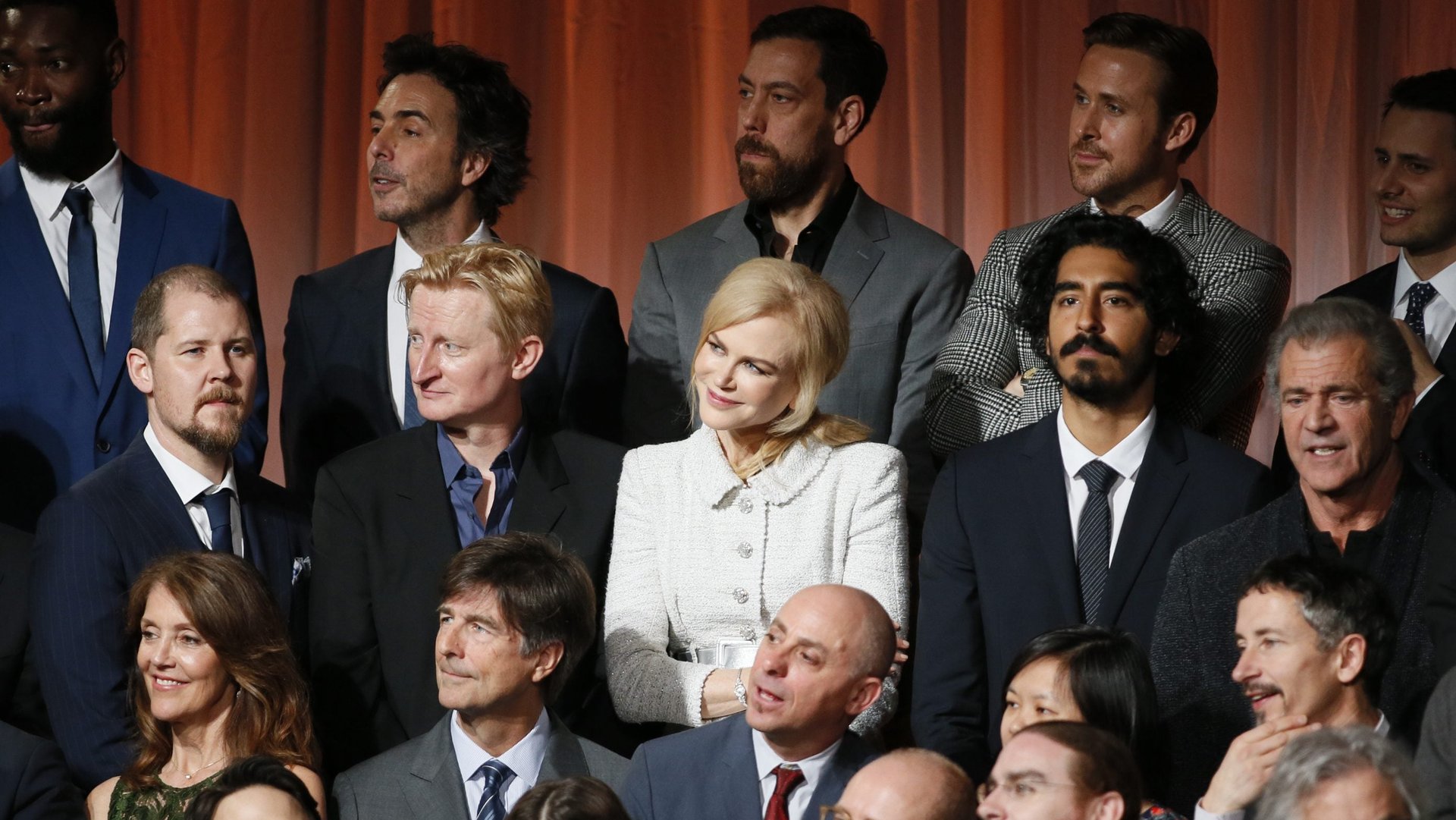Women’s representation in film is actually getting worse, not better
On Sunday, Sofia Coppola won the best director award at Cannes for her film The Beguiled, becoming only the second woman in the 70-year history of the prestigious film festival to win the prize.


On Sunday, Sofia Coppola won the best director award at Cannes for her film The Beguiled, becoming only the second woman in the 70-year history of the prestigious film festival to win the prize.
As dismal as that statistic is, somehow it’s still double the number of women who have won the Oscar for best director. Just one woman (Kathryn Bigelow in 2009 for The Hurt Locker) has ever taken home the Academy of Motion Picture Arts and Sciences’ directing award. And only four women have ever even been nominated for best director since it was first handed out in 1927.
This would be unbelievable if the film industry weren’t so obviously male-centric. And despite Hollywood’s reputation as a liberal bubble, the lack of female representation is getting worse, not better.
Women made up just 7% of all directors of the highest-grossing 250 films last year, according to the Center for the Study of Women in Television and Film at San Diego State University. That was a 2% drop from 2015. Meanwhile, the percent of woman producers (24%), editors (17%), and cinematographers (5%) each declined as well. Most figures are essentially the same as they were in 1998, and almost no progress has been made in the last two decades, as this 2015 chart shows:
The problem isn’t just behind the camera. An analysis of 2,000 US films by the data publication Polygraph revealed that women were the lead characters just 22% of the time since the 1980s. In three-quarters of all the movies analyzed, men spoke the majority of the lines, whereas less than 9% of the movies featured women speakers more prominently.
Women already comprise the majority of the moviegoing population, so by allowing men to dominate the screen, Hollywood is shortchanging its most devoted audience—and probably missing a lucrative opportunity to expand it.
At Cannes, actress Jessica Chastain (a jury member for this year’s festival) said she was disturbed by the effect the industry’s gender imbalance is having on its films:
“I do believe that if you have female storytelling you also have more authentic female characters,” Chastain said at a press conference following Coppola’s win. “There are some exceptions, I will say. But, for the most part, I was surprised by the representation of female characters on screen in these films.”
She continued: “I do hope that when we include more female storytellers, we will have more of the women that I recognize in my day-to-day life: ones that are proactive, have their own agencies, don’t just react to the men around them. They have their own point of view.”
Chastain’s surprise is understandable: Surely, if any industry could better represent half of the world’s population, it would be film. But if there’s anything to be gleaned from Hollywood’s massive diversity problem, it’s that the movie business is loathe to branch out beyond what 100 years of almost entirely white, male filmmaking has given us.
The bottom line is major film studios are inherently risk-averse, choosing to build off of their previous successes rather than make bold choices. Hiring more women shouldn’t even be a bold choice, but because the industry has been so male-centric for decades, films directed by and about women are often perceived as outside the safe, familiar norm.
The box office says otherwise. Films directed by women actually profit more, on average, than those directed by men. But industry habits are deeply entrenched, and the perception that women pose a financial risk remains.
Studio executives used to make the excuse that there were fewer women attending film school, and thus a smaller pool of women to hire from. But that’s no longer the case. Instead, the prevailing excuse now is the fallacy that women are only interested in telling “women’s stories.” One need only perform a cursory glance at the filmography of successful women writers and directors to know that that notion is untrue, but the idea, like many other sexist ones, persists.
The scrutiny female directors face is not wholly unlike that of female politicians, who are often vilified or underestimated. And when women take the helm of major movie investments, they may well face the same kinds of prejudices that women entrepreneurs encounter when trying to raise venture capital for new companies.
As a final insult, even when women succeed against these odds at making a mainstream movie, they’re evaluated on a different scale from men. While male filmmakers are often anointed the “next big thing” and immediately thrown opportunities to direct major big-budget films after just one successful indie movie, women are rarely afforded the same upward mobility:
Perhaps Wonder Woman, directed by Patty Jenkins, can help change this narrative. The superhero film, which comes out on Friday and is already basking in universal acclaim, could make a fortune for its studio, Warner Bros.
One film won’t amend decades of industry sexism, but maybe, like its titular hero does for mankind, Wonder Woman can show Hollywood how to be better.